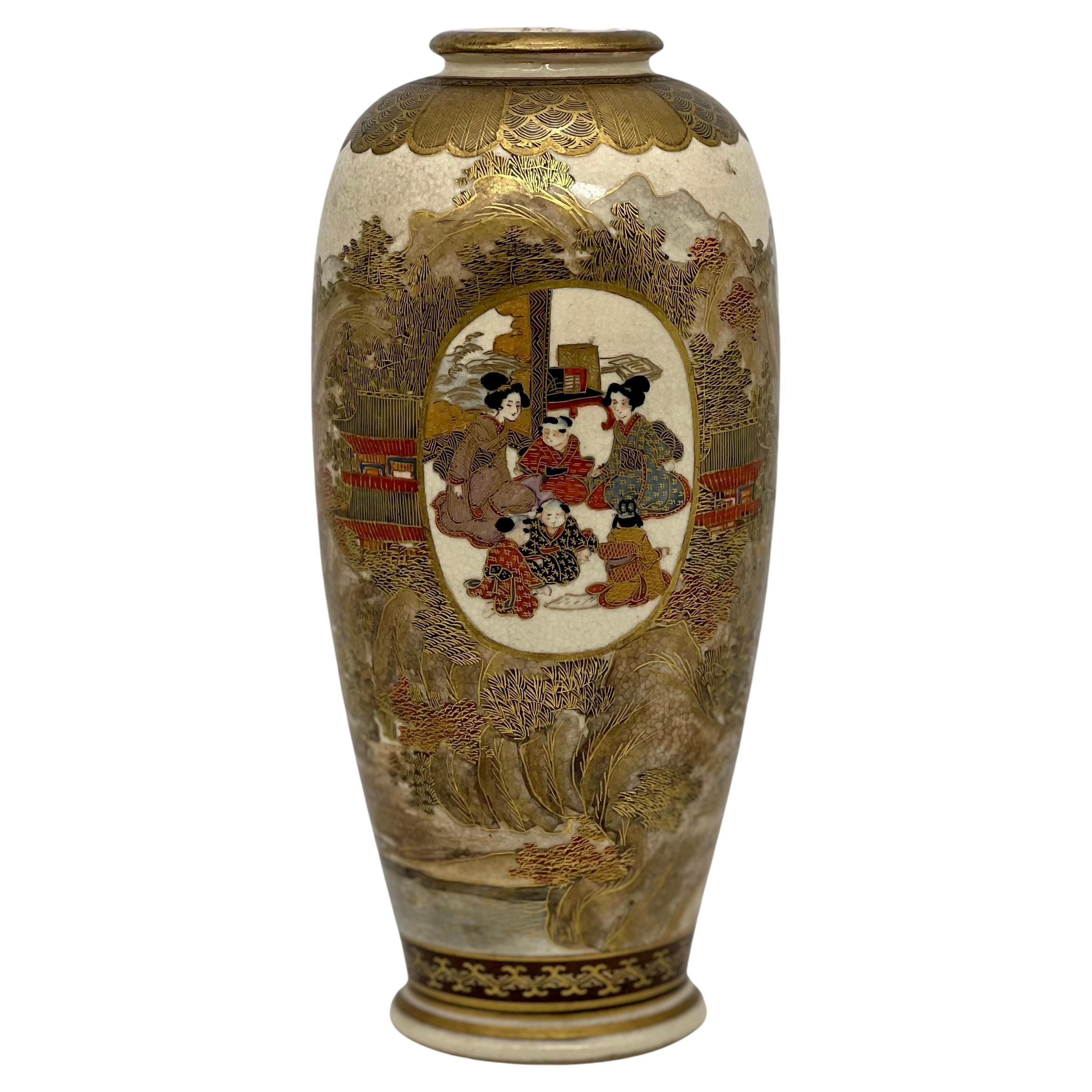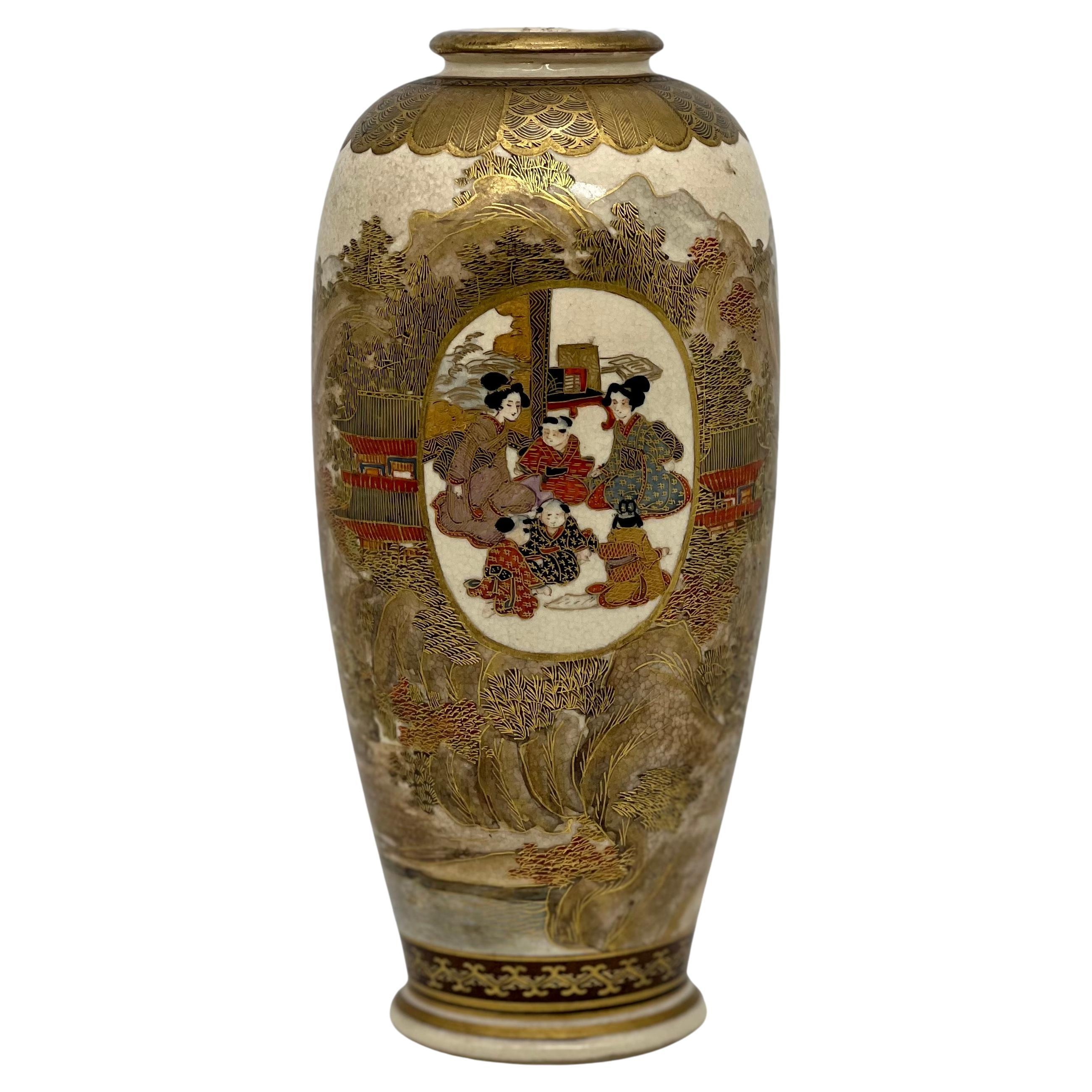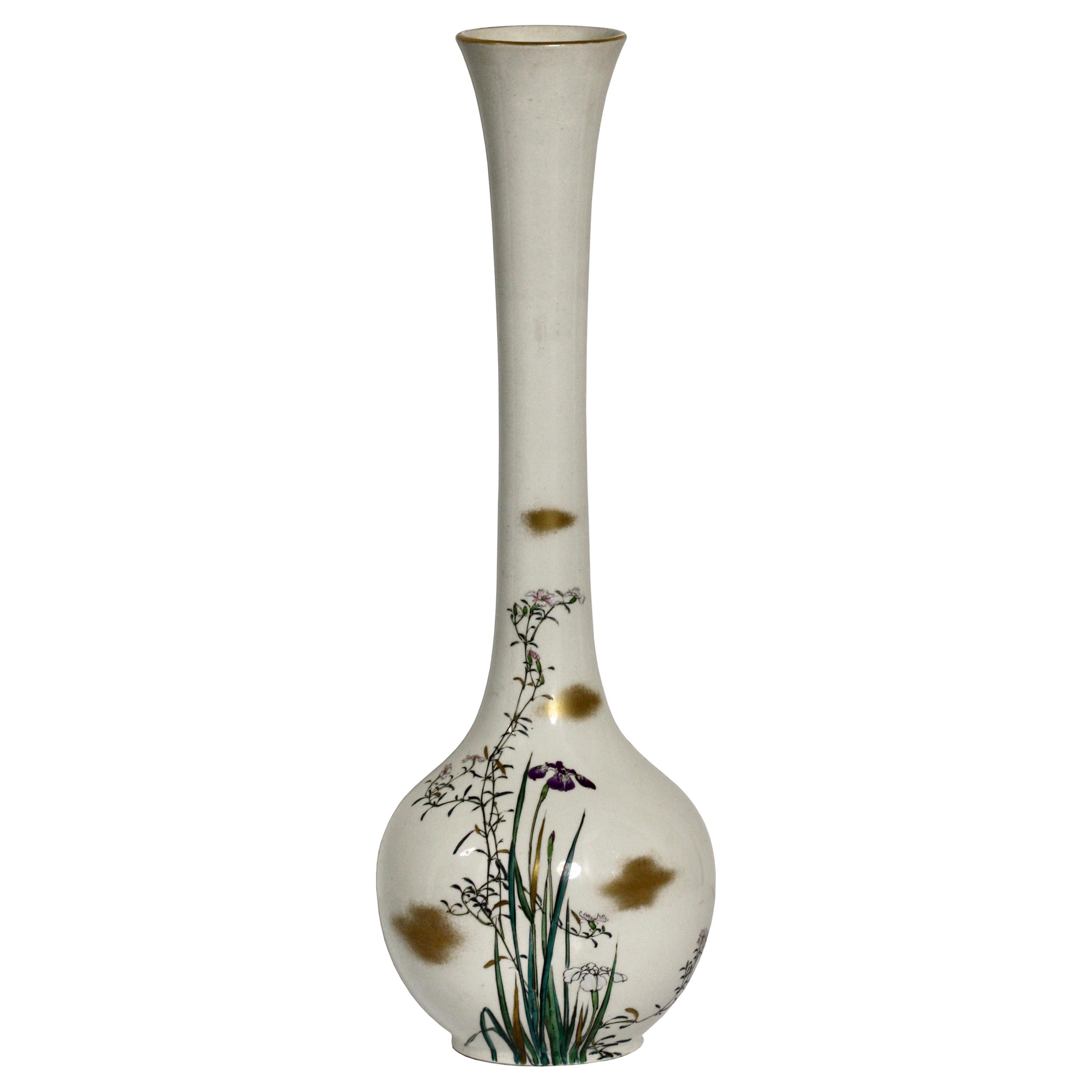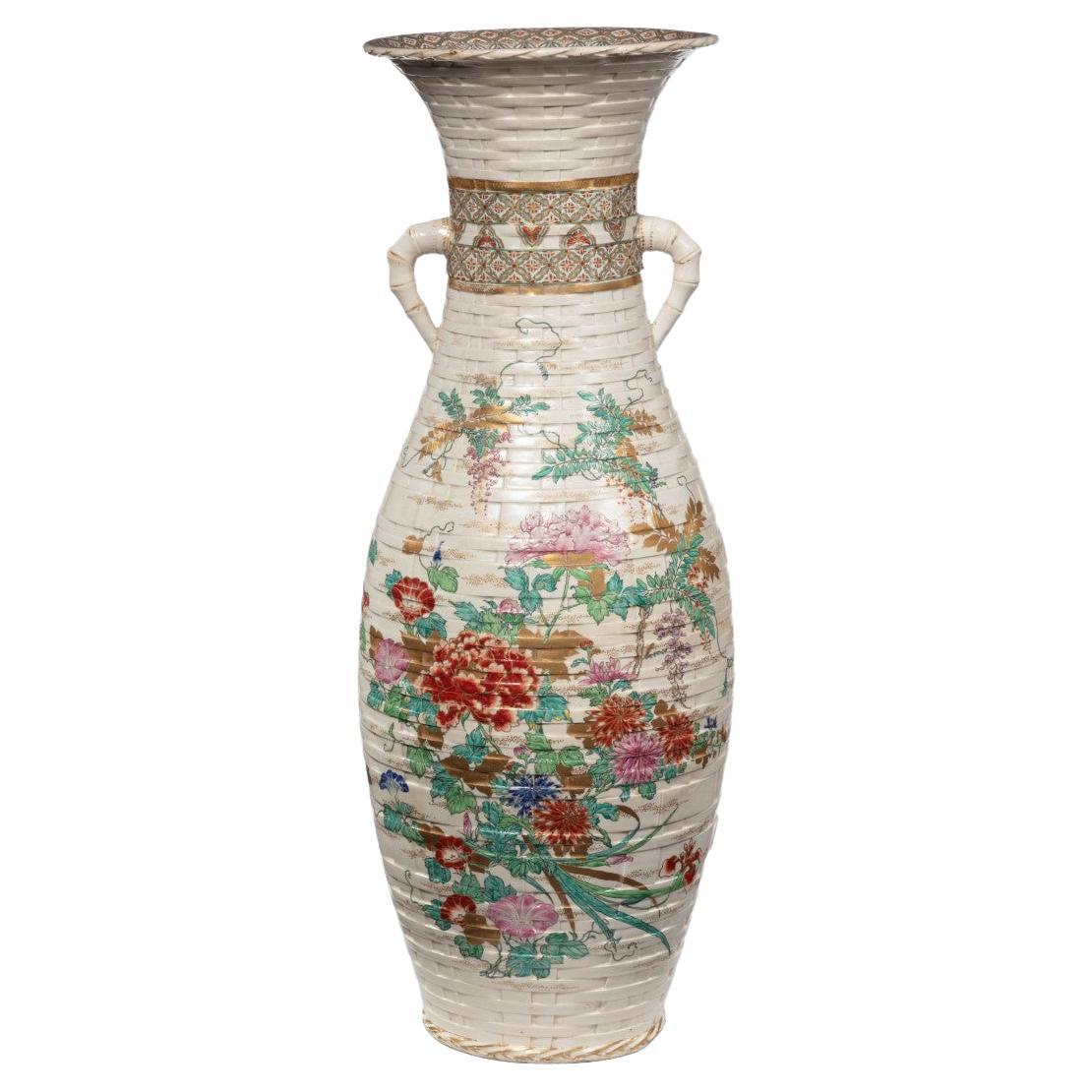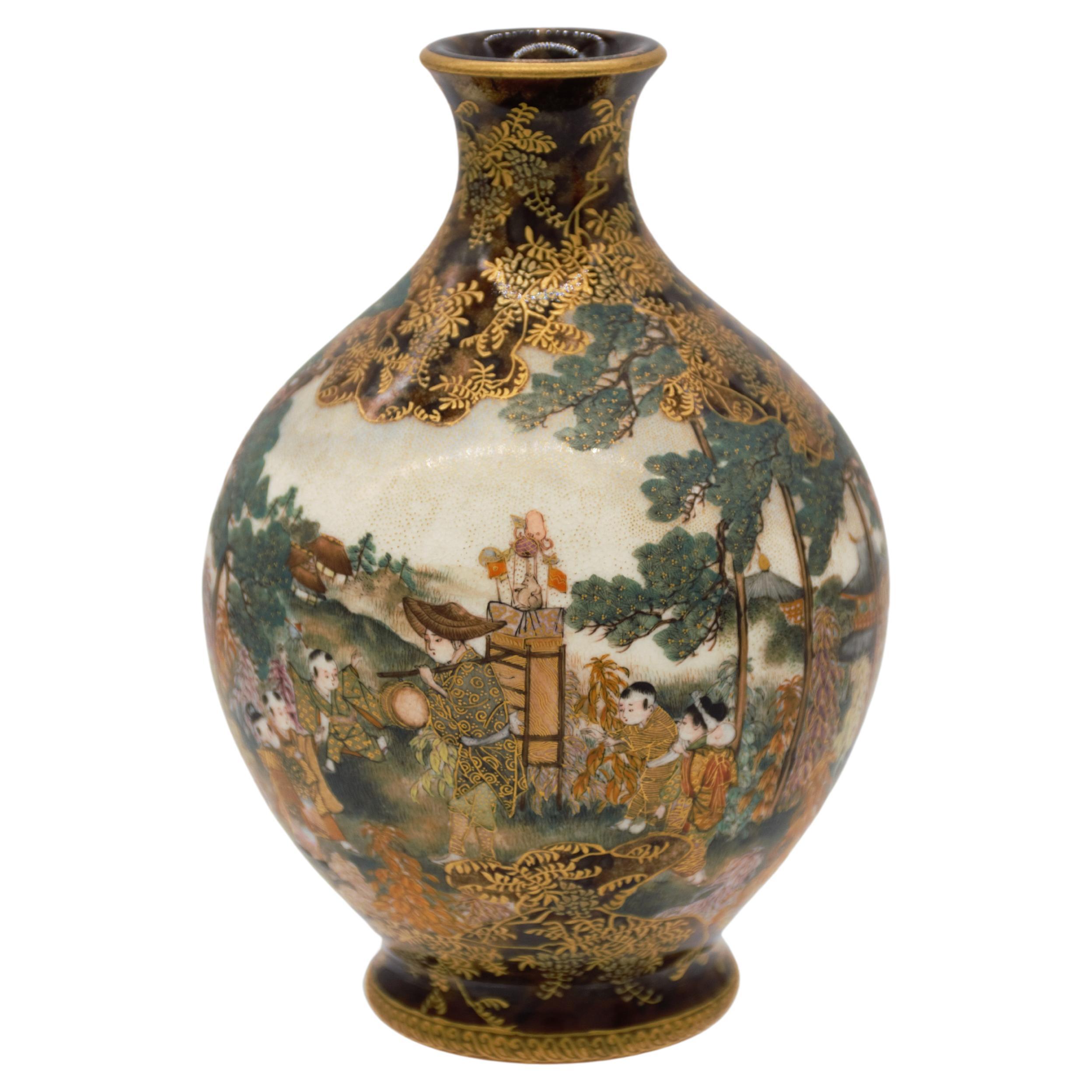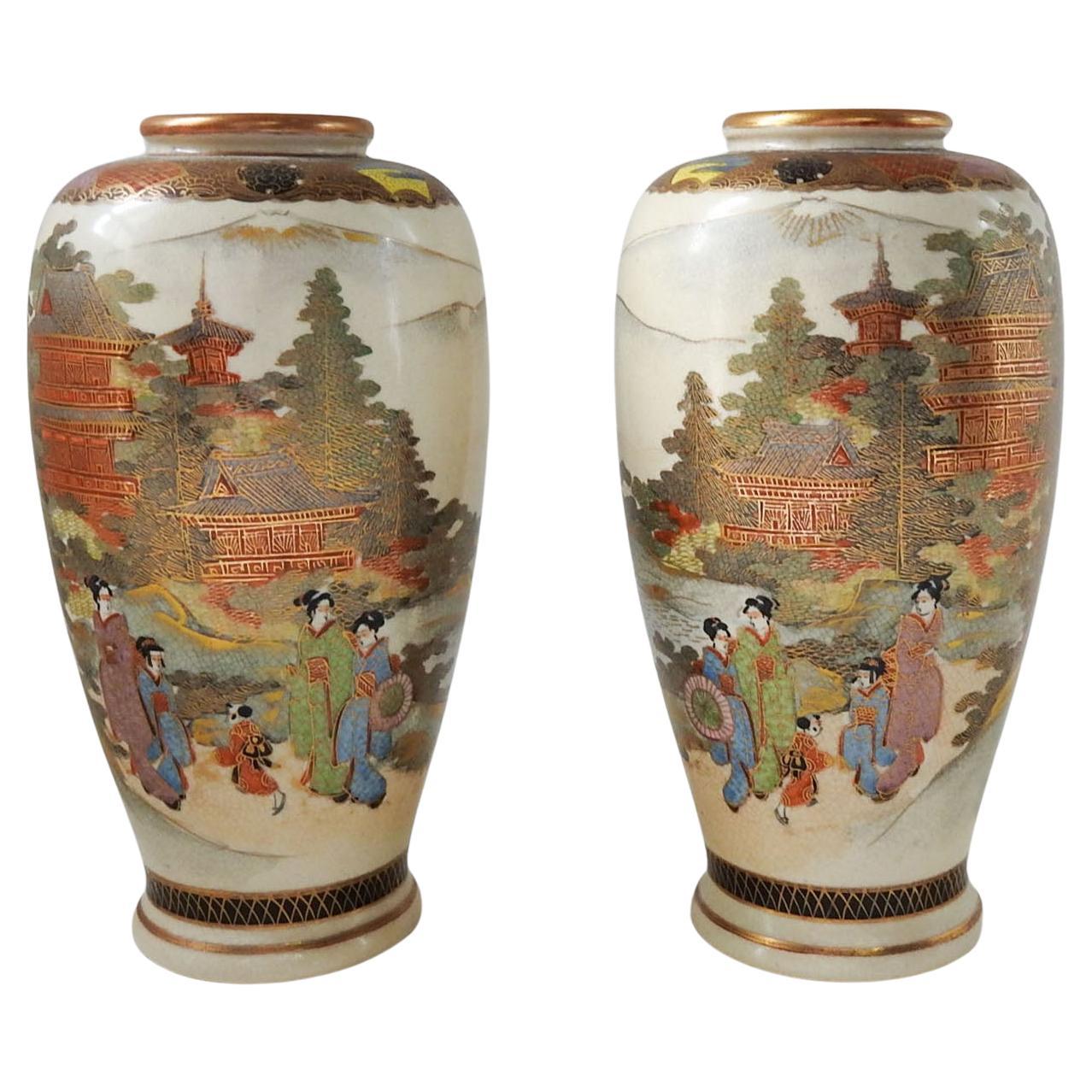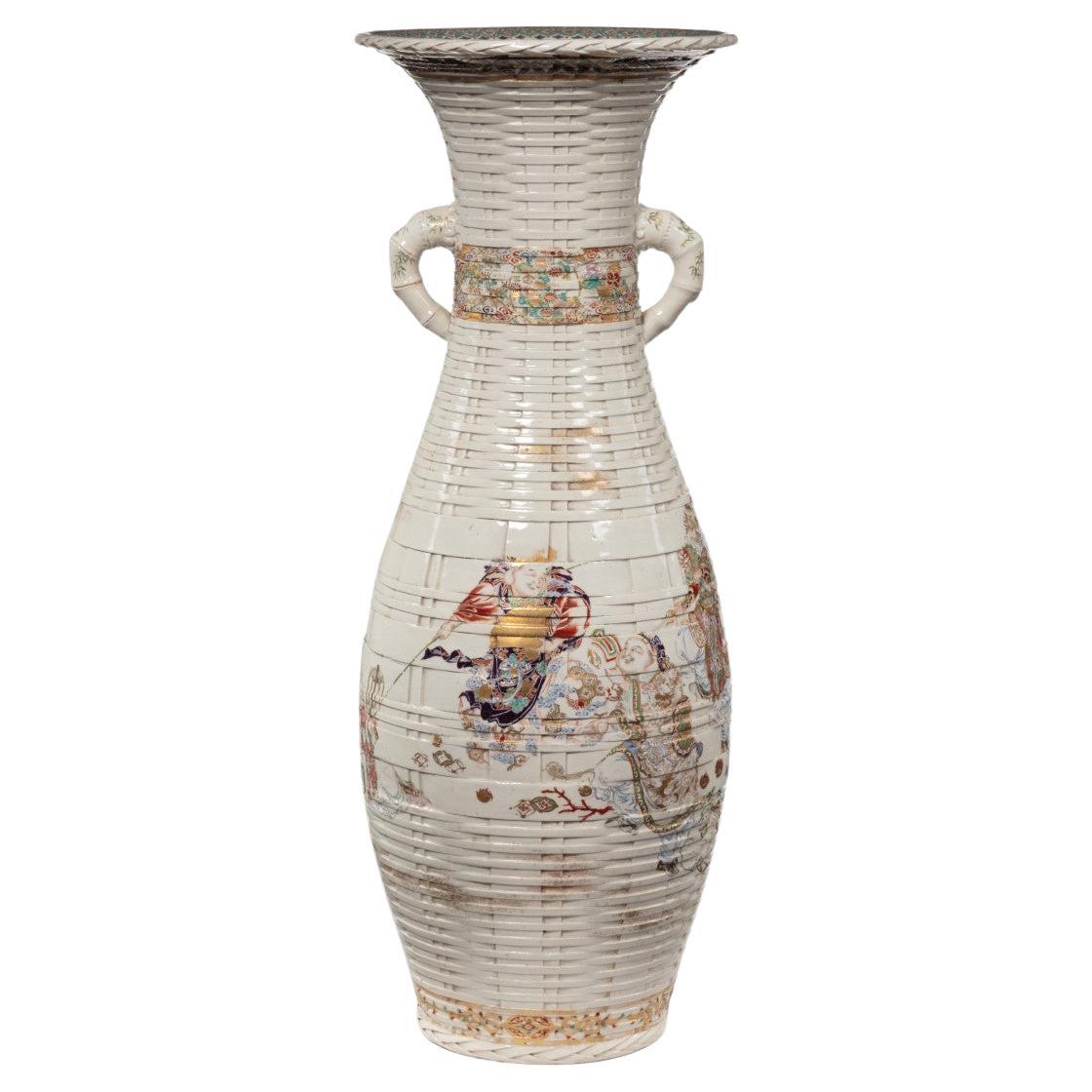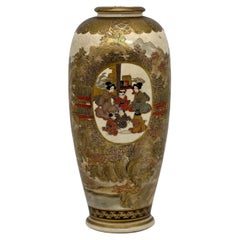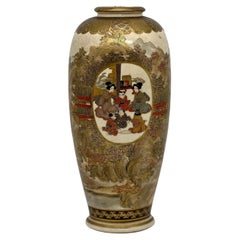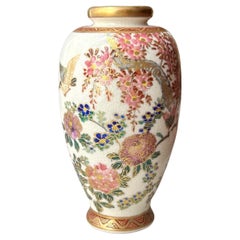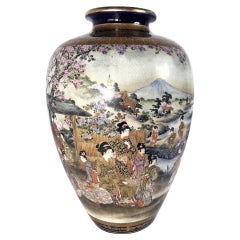
A Satsuma Vase, Meiji Period Signed Shuzan
View Similar Items
Want more images or videos?
Request additional images or videos from the seller
1 of 5
A Satsuma Vase, Meiji Period Signed Shuzan
About the Item
- Dimensions:Height: 12.37 in (31.42 cm)Diameter: 5 in (12.7 cm)
- Materials and Techniques:
- Period:
- Date of Manufacture:circa 1900s
- Condition:
- Seller Location:West Palm Beach, FL
- Reference Number:Seller: 1060-81131stDibs: LU3860118762492
About the Seller
5.0
Vetted Seller
These experienced sellers undergo a comprehensive evaluation by our team of in-house experts.
Established in 1989
1stDibs seller since 2018
92 sales on 1stDibs
Typical response time: 8 hours
More From This SellerView All
- Japanese Satsuma Earthenware Vase, Meiji PeriodLocated in West Palm Beach, FLJapanese Satsuma Earthenware Vase, Meiji Period, 1868-1912, of baluster form, the decorated in poly-chrome enamels and gilt on a clear crackle glaze with a Daimyo procession, the nec...Category
20th Century Ceramics
MaterialsCeramic
- Kinkozan, Japanese Satsuma Vase, Meiji PeriodBy KinkozanLocated in West Palm Beach, FLKinkozan, Japanese Satsuma vase, Meiji Period (1868-1912) Of baluster form with an elongated neck decorated in polychrome enamels and gilt on a clear crackle glaze in an Art-Nouvea...Category
20th Century Ceramics
MaterialsCeramic
- A pair of "butterfly" Satsuma earthenware vases, Meiji periodLocated in West Palm Beach, FLA pair of "butterfly" Satsuma earthenware vases, Meiji period finely decorated in enamels and gilt with scenes of Samurai and retainers and high ranking female members of the househ...Category
Antique 19th Century Ceramics
MaterialsCeramic
- Satsuma Earthenware Vase, by Kinkozan, Japanese, Meiji PeriodBy SatsumaLocated in West Palm Beach, FLA Satsuma Earthenware Vase, by Kinkozan, Japanese, Meiji period (1868-1912) decorated in polychrome enamels and gilt over a clear, crackled glaze, delicately painted with ladies and men, the reverse with a flowering garden with sprays of flowers, the neck with geometric and floral designs, a band of kifu heads in silver and gilt above the foot, on a midnight-blue ground, signed Kinkozan zo...Category
Antique 1860s Vases
MaterialsEarthenware
- Satsuma Earthenware Vase and Cover, Japanese, Meiji PeriodBy SatsumaLocated in West Palm Beach, FLA Satsuma Earthenware vase and cover, Japanese, Meiji period, (1868-1912) decorated in polychrome enamels and gilt over a clear, crackled glaze, delicately painted with samurai on ...Category
Antique 1890s Antiquities
MaterialsCeramic
- Japanese Satsuma Cylindrical Koro and Cover, Signed Gyokuzan, Meiji PeriodLocated in West Palm Beach, FLA Japanese Satsuma cylindrical koro and cover, signed Gyokuzan, Meiji period (1868-1912) Raised on three supports, painted and gilt with a continuous scene of ladies and children p...Category
Antique 19th Century Ceramics
MaterialsCeramic
$3,040 Sale Price20% Off
You May Also Like
- A Magnificent Japanese Satsuma Vase. Signed. Meiji period.Located in London, GBA Magnificent Japanese Satsuma Vase. Signed. Meiji period. 19th C A Fine Japanese satsuma vase of a baluster form finely painted in Satsuma enamels enhanced with gold paint,decora...Category
Antique Late 19th Century Japanese Ceramics
MaterialsCeramic
- A Magnificent Japanese Satsuma Vase. Signed. Meiji periodLocated in London, GBA Magnificent Japanese Satsuma Vase. Signed. Meiji period. 19th C A Fine Japanese satsuma vase of a baluster form finely painted in Satsuma enamels enhanced with gold paint,decora...Category
Antique Late 19th Century Japanese Ceramics
MaterialsCeramic
- Meiji Period Diminutive Satsuma Baluster Vase.By SatsumaLocated in Vero Beach, FLMeiji Period Diminutive Satsuma Baluster Vase. This Japanese Satsuma vase from the late Meiji period is hand painted and gilt decorated with a Japanese landscape in exquisite detail...Category
20th Century Japanese Meiji Ceramics
MaterialsPorcelain
- Japanese Meiji Period Satsuma Bowl Signed SuizanLocated in Newark, EnglandJapanese Meiji period satsuma scalloped shaped bowl. The bowl of beautiful form with gilt pin-striping and dotting to the accented areas. The exterior decorated with multiple fish swimming around the outside with small flower sprays between. To the inside a painted netting covers the bowl with butterflies and further floral sprays. The centre decorated with representations of each of the woodcut prints from Hiroshige's Tokaido gojusan tsugi (53 Stations of the Tokaido Road). To the base a stylised cartouche signature within an oval for Suizan. This Japanese satsuma bowl...Category
Antique Late 19th Century Japanese Meiji Ceramics
MaterialsCeramic, Earthenware, Pottery
- Large Meiji Period Satsuma Earthenware Floor VaseLocated in Lymington, HampshireA large Meiji period Satsuma earthenware floor vase, the of baluster form, painted in pastel overglaze enamels and gilding with two large sprays of flowers including prunus blossom, ...Category
Antique 1870s Japanese Meiji Ceramics
MaterialsEnamel
- Satsuma earthenware vase by kinkozan, Meiji periodBy KinkozanLocated in Tel Aviv - Jaffa, ILthe body of this small marvelous vase is painted with a scene of a puppet show vendor with his wood backpack, on top of the backpack there are toys and dolls, he is surrounded with a group of 6 children, and on the background you can see a village. on the other side of the vase there is an amazing painting of flowers and on the sides there are two amazing strong pine trees, the amorphous background is decorated in a "Tortoiseshell" color and design that gives it a real character and which is quite rare to see on satsuma pottery. all the vase is over richly overpainted over the glaze with gold, which gives it its depth and realism. signed Kyoto Kinkozan zo, and sealed Kinkozan zo Kyoto’s Satsuma: The painting technique used in Kyoto’s Satsuma-style ware is said to be the invention of the sixth generation Kinkōzan Sōbei (1824–1884). The Kinkōzan were a famous family of Kyoto Awataguchi potters who made ceramics that were used at Shōren'in, a temple closely tied to the imperial family, and by the shoguns of the Edo government. In fact the shogun is said to have granted them the name Kinkōzan. With the upheavals at the end of the Edo period, however, and the reforms of the subsequent Meiji government, the potters lost their traditional patrons and had to develop new markets. Just at that time, the visit of a certain Westerner is said to have decided them to embark on overseas trade. By 1870, they had perfected Kyō Satsuma...Category
Antique 1890s Japanese Meiji Ceramics
MaterialsGold
Recently Viewed
View AllMore Ways To Browse
Blue Satsuma
Satsuma Flower Vase
Blue Satsuma Vases
Satsuma Shimazu
Shimazu Satsuma Vase
Shimazu Vase
Antique Asian Folk Art
Japanese Old Wooden Box
Antique Wabisabi
Wood Carved Lattice
Japanese Antique Shop
Japanese Antique Shops
Antique Japanese Storage Box
Qing Metal
Japanese Figurines
Figurines Japan
Japaneses Figurines
Bamboo Antiques Lacquer
